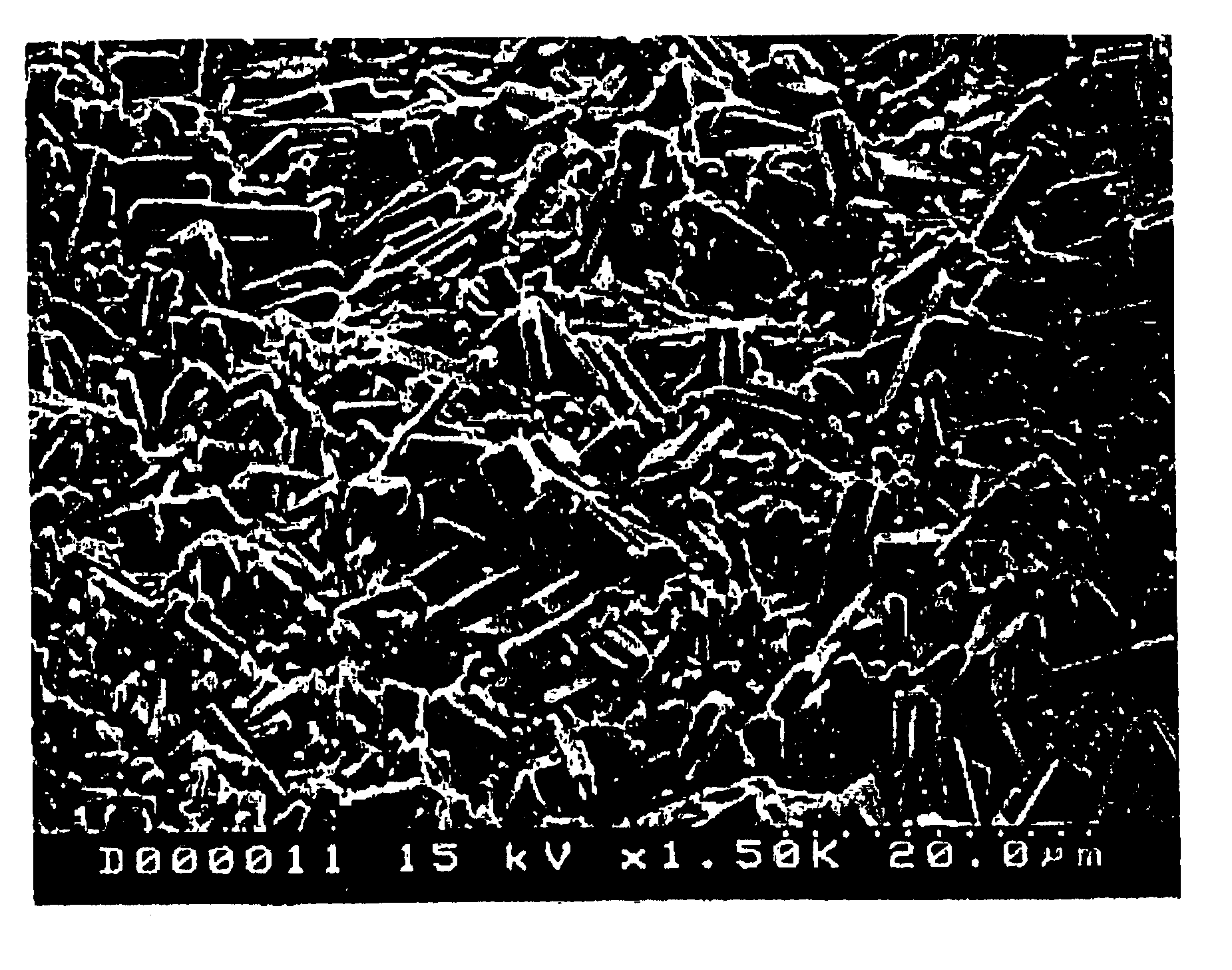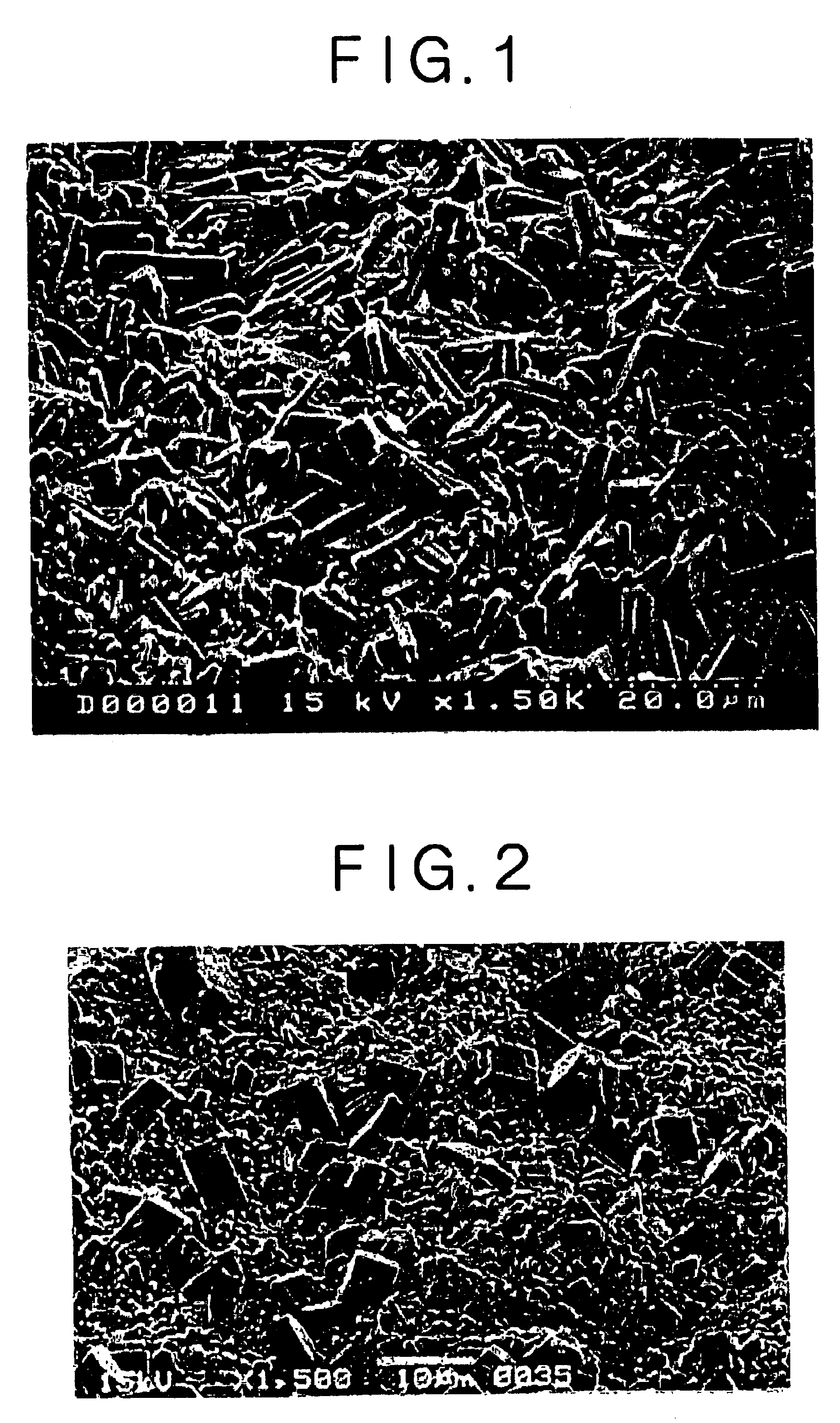Galvannealed steel sheet superior in workability
a technology of galvanized steel and superior workability, which is applied in the direction of transportation and packaging, coating, chemistry apparatus and processes, etc., can solve the problems of deterioration of anti-powdering properties, inconvenient use, and incomplete plating
- Summary
- Abstract
- Description
- Claims
- Application Information
AI Technical Summary
Benefits of technology
Problems solved by technology
Method used
Image
Examples
example 1
(Effect on Mechanical Properties and Plating Characteristics)
This example demonstrates how the manufacturing condition affect mechanical properties (tensile strength and elongation) and plating characteristics (incomplete plating, plating surface slidability, and anti-powdering properties).
The procedure in this example started with preparing by vacuum melting a sample steel having a composition shown in Table 1.
The sample steel underwent hot rolling, acid pickling, and cold rolling down to 1.2 mm thick. The resulting steel sheet underwent iron preplating under the following conditions. Incidentally, duration of electrolysis for this iron preplating was varied so that the desired amount of deposit was obtained as shown in Table 2.
Composition of plating bath: FeSO.sub.4 7H.sub.2 O . . . 400 g / L
pH of plating bath: 2.0
Temperature of plating bath: 60.degree. C.
Current density: 50 A / dm.sup.2
The plated steel sheet underwent reducing annealing at 850.degree. C. After annealing, the steel sh...
example 2
(Effect on Anti-Powdering Properties and Alloying)
This example demonstrates how anti-powdering properties is affected by the aluminum concentration in the plating bath and the bath temperature.
A sample steel (A) shown in Table 1 was prepared by vacuum melting. The sample steel underwent hot rolling, acid pickling, and cold rolling down to 1.2 mm thick. The resulting steel sheet underwent iron preplating under the same conditions as in Example 1 (coating weight: 5 g / m.sup.2) The plated steel sheet underwent reducing annealing at 850.degree. C. After annealing, it was cooled to 420.degree. C. at an average cooling rate of 5.degree. C. / s and then held at 420.degree. C. for 100 seconds. The steel sheet underwent hot-dip zinc-coating under different conditions (with the effective aluminum concentration varied in the bath and with the bath temperature varied) as shown in Table 4. The hot-dip zinc-coating was followed by alloying treatment at 430.degree. C. for a prescribed length of time....
PUM
| Property | Measurement | Unit |
|---|---|---|
| particle size | aaaaa | aaaaa |
| temperature | aaaaa | aaaaa |
| elongation | aaaaa | aaaaa |
Abstract
Description
Claims
Application Information
 Login to View More
Login to View More - R&D
- Intellectual Property
- Life Sciences
- Materials
- Tech Scout
- Unparalleled Data Quality
- Higher Quality Content
- 60% Fewer Hallucinations
Browse by: Latest US Patents, China's latest patents, Technical Efficacy Thesaurus, Application Domain, Technology Topic, Popular Technical Reports.
© 2025 PatSnap. All rights reserved.Legal|Privacy policy|Modern Slavery Act Transparency Statement|Sitemap|About US| Contact US: help@patsnap.com


